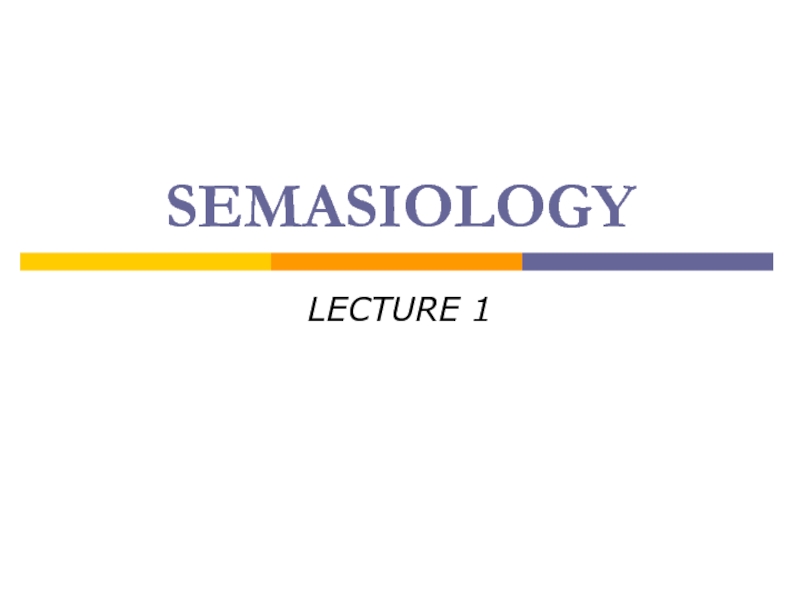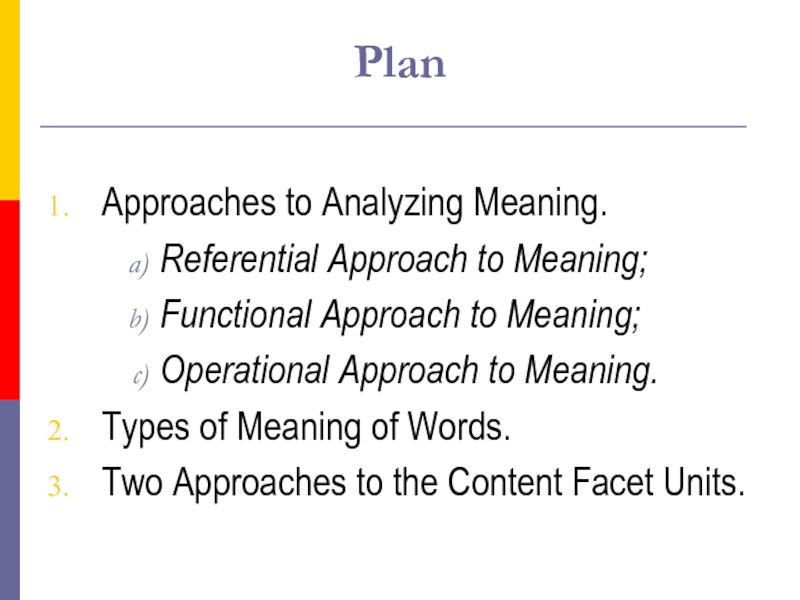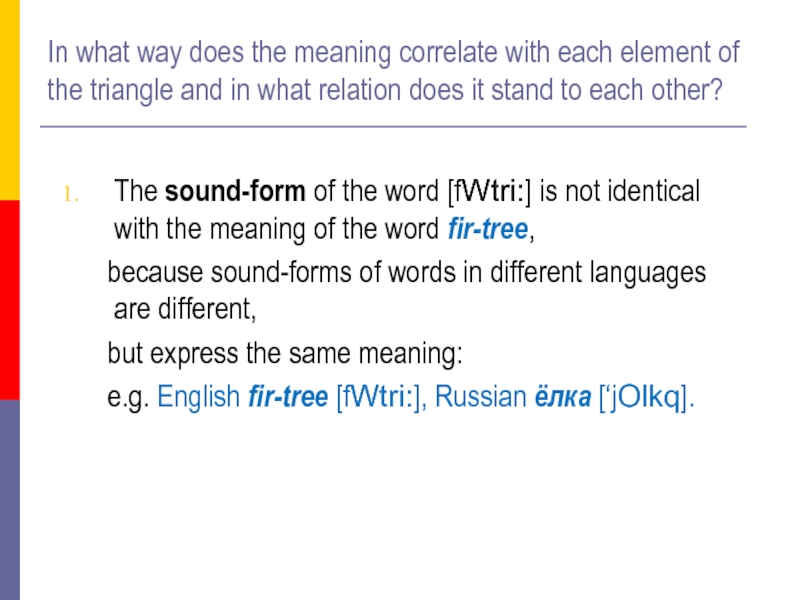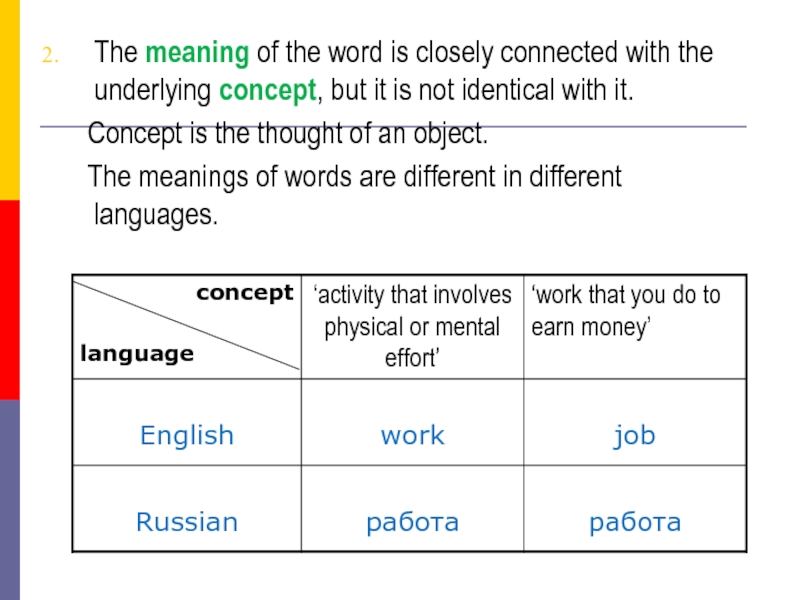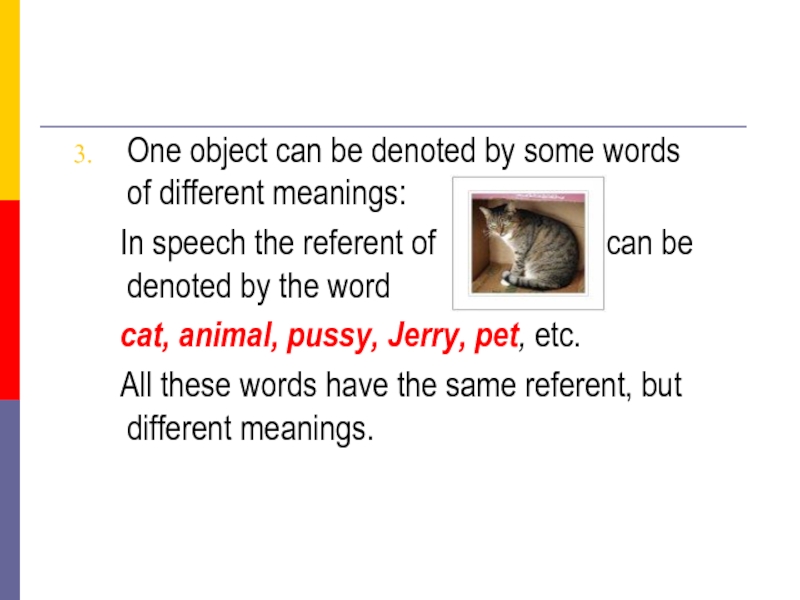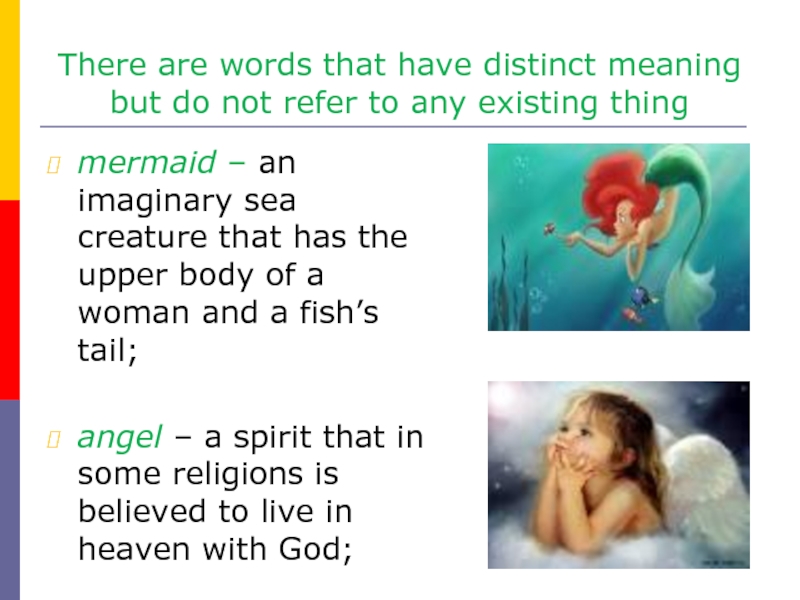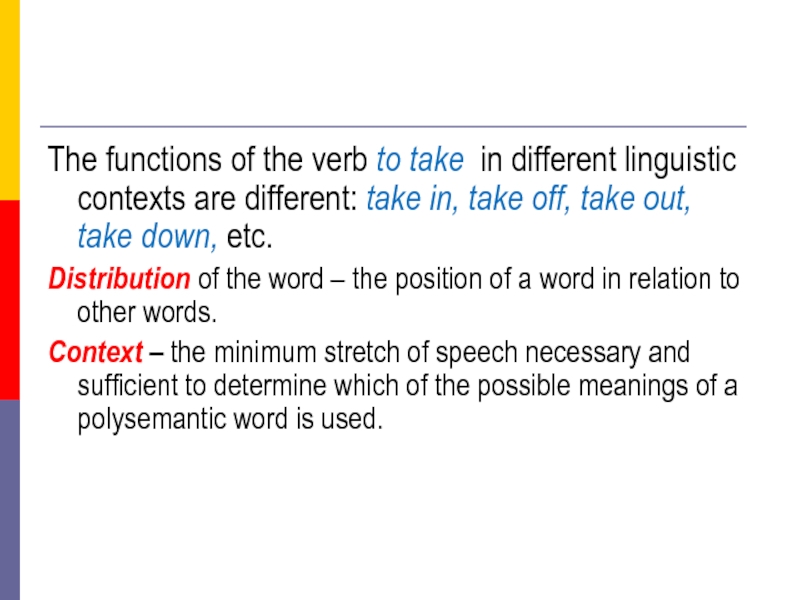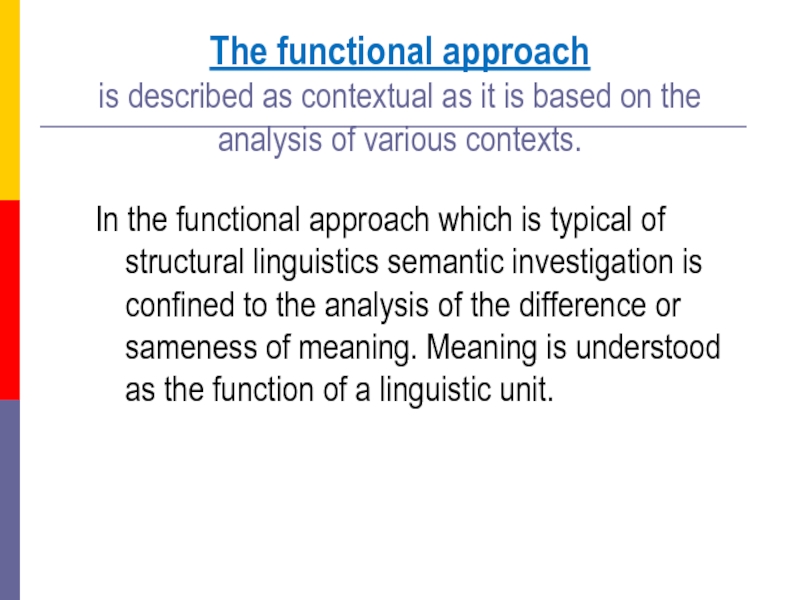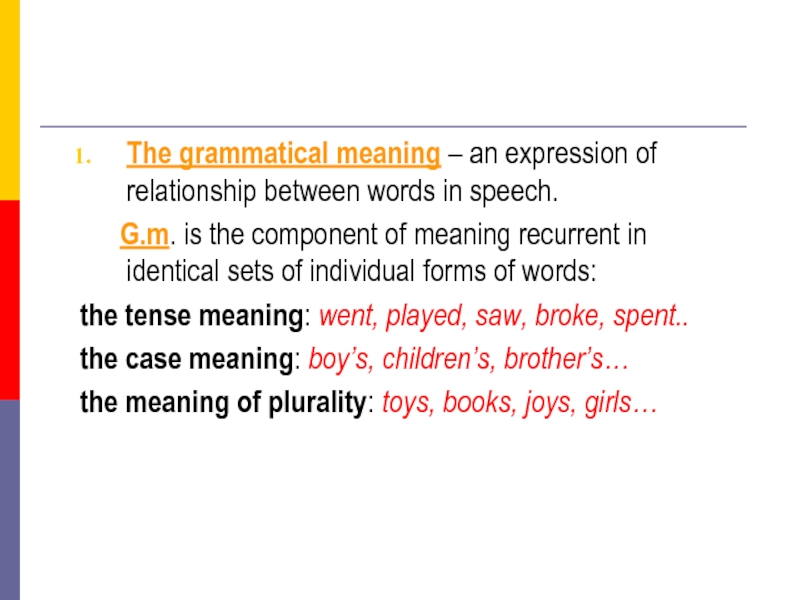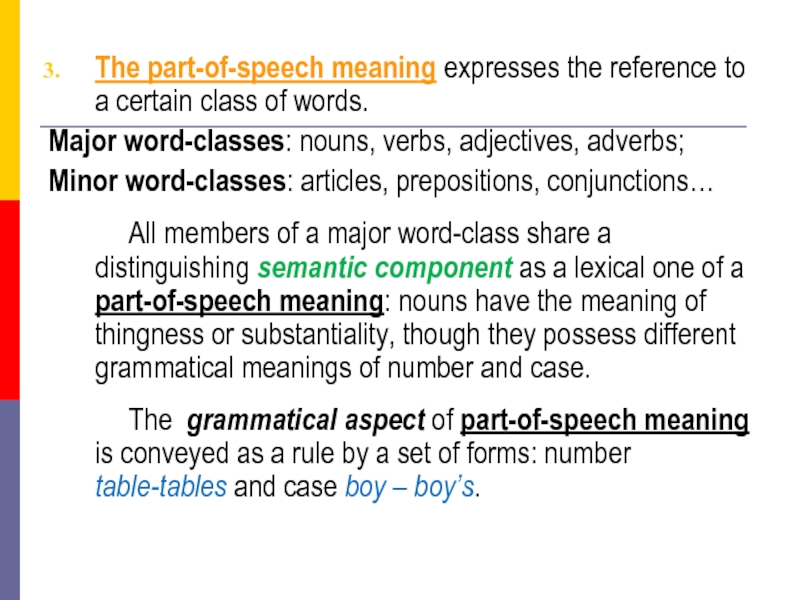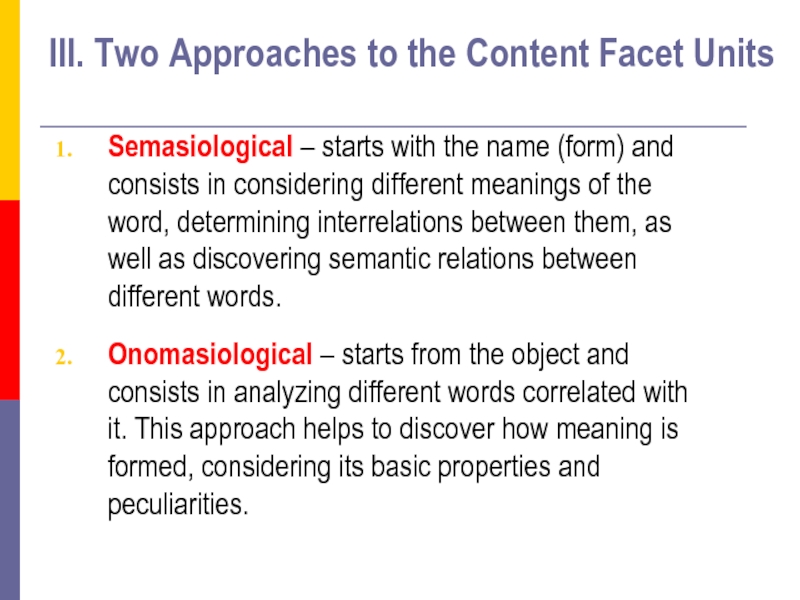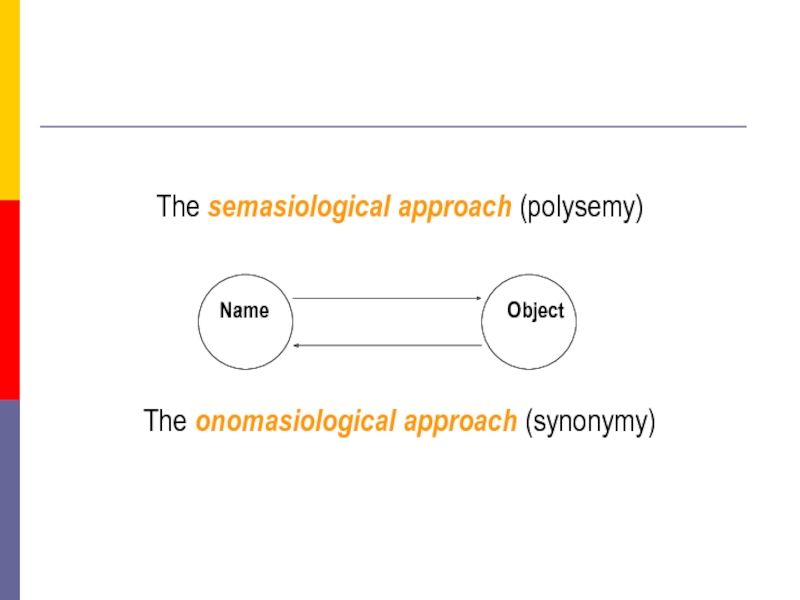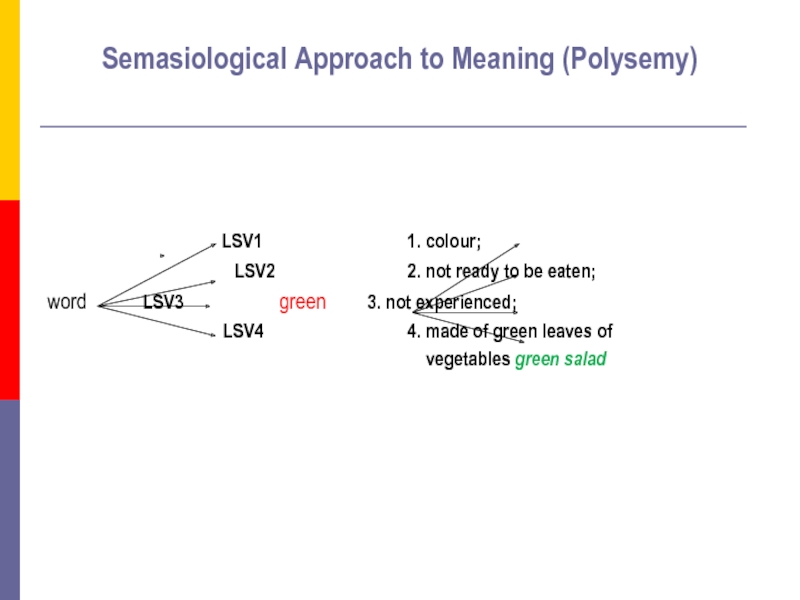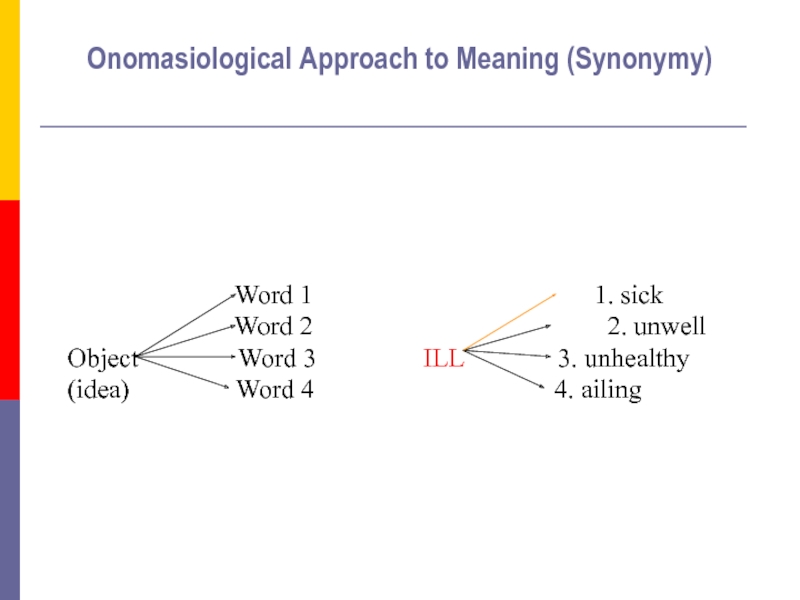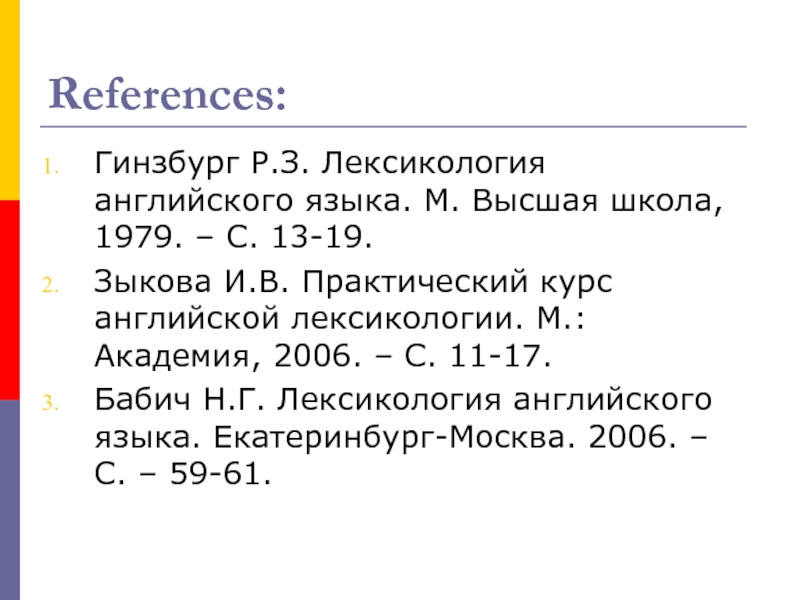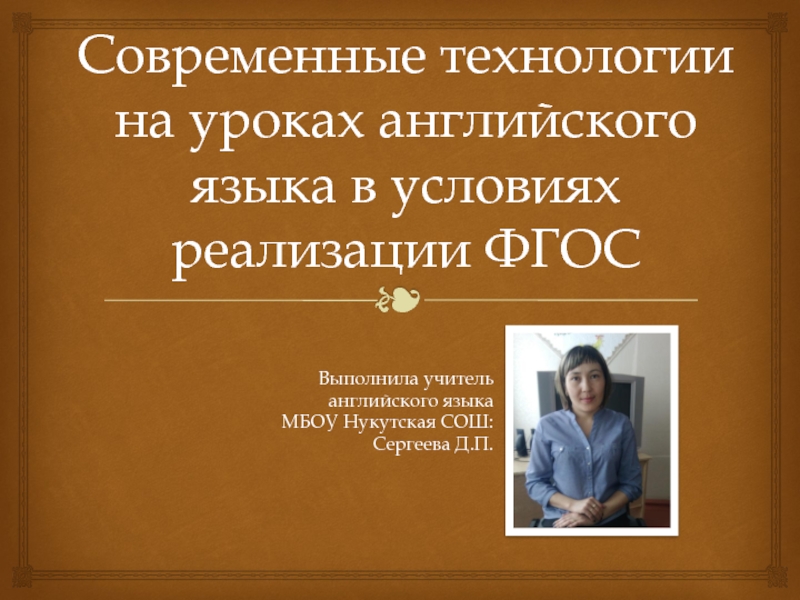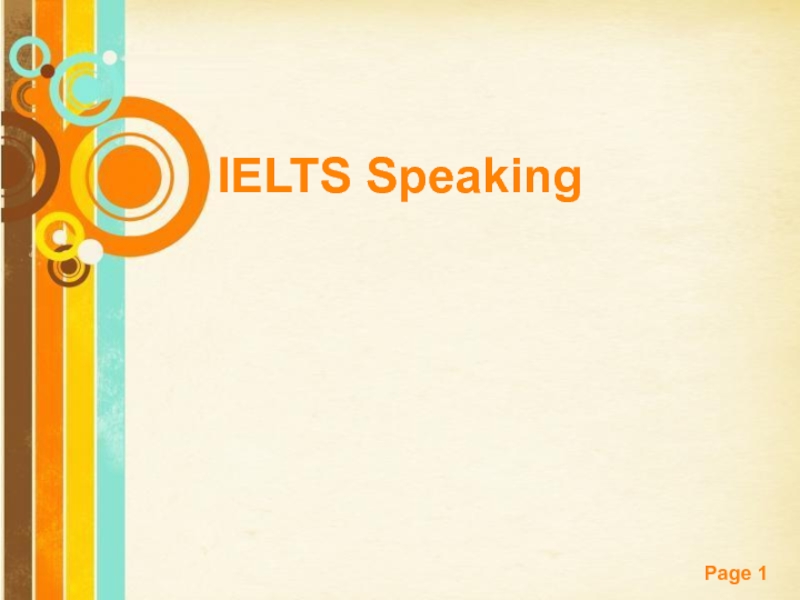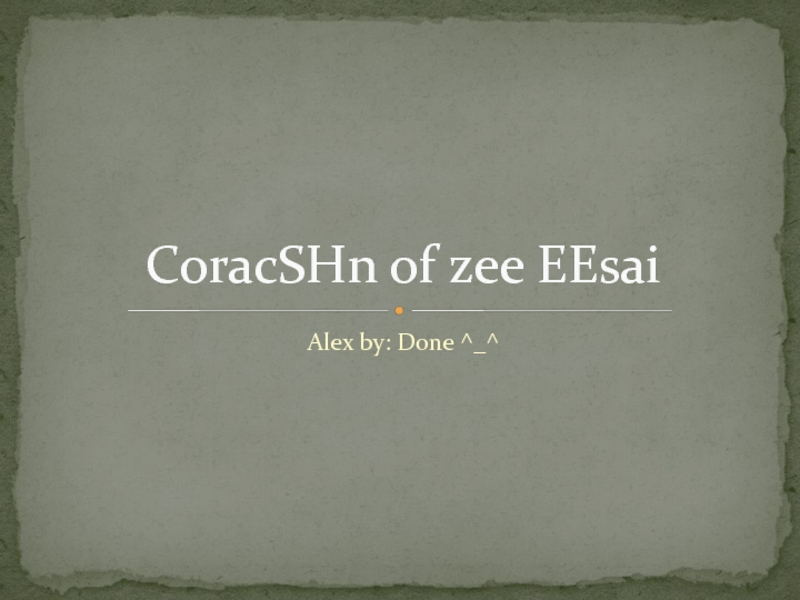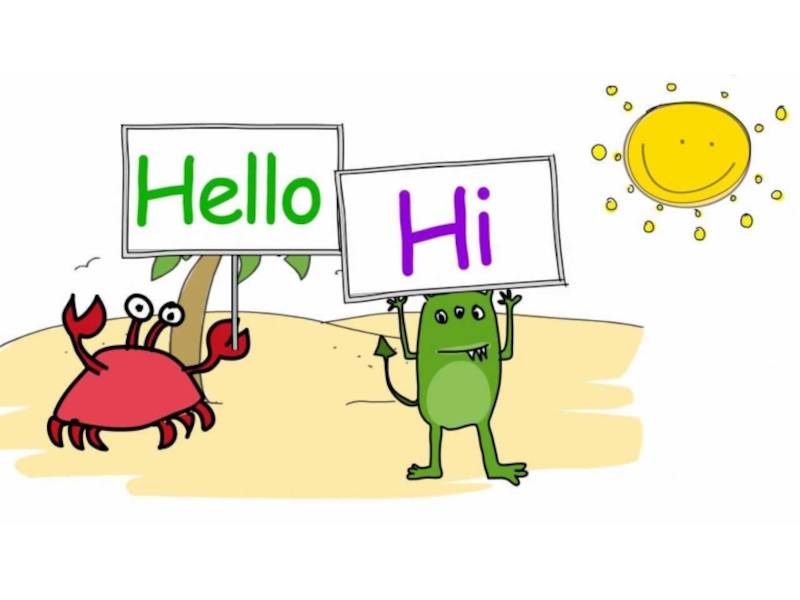- Главная
- Разное
- Дизайн
- Бизнес и предпринимательство
- Аналитика
- Образование
- Развлечения
- Красота и здоровье
- Финансы
- Государство
- Путешествия
- Спорт
- Недвижимость
- Армия
- Графика
- Культурология
- Еда и кулинария
- Лингвистика
- Английский язык
- Астрономия
- Алгебра
- Биология
- География
- Детские презентации
- Информатика
- История
- Литература
- Маркетинг
- Математика
- Медицина
- Менеджмент
- Музыка
- МХК
- Немецкий язык
- ОБЖ
- Обществознание
- Окружающий мир
- Педагогика
- Русский язык
- Технология
- Физика
- Философия
- Химия
- Шаблоны, картинки для презентаций
- Экология
- Экономика
- Юриспруденция
Semasiology презентация
Содержание
- 1. Semasiology
- 2. Plan Approaches to Analyzing Meaning. Referential
- 3. SEMASIOLOGY – an area of Lexicology that
- 4. 1.1. Referential Approach 3 components connected with
- 5. In what way does the meaning correlate
- 6. The meaning of the word is closely
- 7. One object can be denoted by some
- 8. There are words that have distinct meaning
- 9. The meaning is not to be identical
- 10. 1.2. Functional Approach Principle: The meaning
- 11. The functions of the verb to take
- 12. The functional approach is described as
- 13. 1.3. Operational Approach Principle: defining meaning through
- 14. Ann arrived at 6 o’clock. It may
- 15. II. Types of word meaning Word-meaning is
- 16. The grammatical meaning – an expression
- 17. The lexical meaning – the meaning proper
- 18. The part-of-speech meaning expresses the reference to
- 19. III. Two Approaches to the Content Facet
- 20. The semasiological approach (polysemy)
- 21. Semasiological Approach to Meaning (Polysemy)
- 22. Onomasiological Approach to Meaning (Synonymy)
- 23. Conclusion The study of the semantic side
- 24. References: Гинзбург Р.З. Лексикология английского языка. М.
Слайд 2Plan
Approaches to Analyzing Meaning.
Referential Approach to Meaning;
Functional Approach to Meaning;
Operational
Types of Meaning of Words.
Two Approaches to the Content Facet Units.
Слайд 3SEMASIOLOGY – an area of Lexicology that is devoted to the study
There is no universally accepted definition of meaning.
Three main categories of definitions of meaning may be referred to:
- Referential (analytical) approach;
- Functional (contextual) approach;
- Operational (information-oriented) approach.
Слайд 41.1. Referential Approach
3 components connected with meaning:
The sound-form of the linguistic
The concept underlying the sound-form;
The referent – the part of aspect of reality to which the linguistic sign refers.
The referential model of meaning – basic triangle
concept
sound-form referent
Слайд 5In what way does the meaning correlate with each element of
The sound-form of the word [fWtri:] is not identical with the meaning of the word fir-tree,
because sound-forms of words in different languages are different,
but express the same meaning:
e.g. English fir-tree [fWtri:], Russian ёлка [‘jOlkq].
Слайд 6The meaning of the word is closely connected with the underlying
Concept is the thought of an object.
The meanings of words are different in different languages.
Слайд 7One object can be denoted by some words of different meanings:
In speech the referent of can be denoted by the word
cat, animal, pussy, Jerry, pet, etc.
All these words have the same referent, but different meanings.
Слайд 8There are words that have distinct meaning but do not refer
mermaid – an imaginary sea creature that has the upper body of a woman and a fish’s tail;
angel – a spirit that in some religions is believed to live in heaven with God;
Слайд 9The meaning is not to be identical with any of the
The referential definitions of meaning are usually criticized on the ground that:
They cannot be applied to sentences;
They cannot account for certain semantic additions emerging in the process of communication;
They fail to account for the fact that one word may denote different objects and phenomena (polysemy) while one and the same object may be denoted by different words (synonymy).
Слайд 101.2. Functional Approach
Principle: The meaning of a linguistic unit can
It is based on analysis of various contexts.
Arrive at, in / early, late, sudden arrival of, etc.
Movement can be followed by a noun (to move a table) and preceded by a pronoun (he moves).
Movement maybe followed by a preposition (movement of a plane) and preceded by an adjective (quick movement).
They occupy different positions in relation to other words.
Слайд 11The functions of the verb to take in different linguistic contexts
Distribution of the word – the position of a word in relation to other words.
Context – the minimum stretch of speech necessary and sufficient to determine which of the possible meanings of a polysemantic word is used.
Слайд 12The functional approach is described as contextual as it is based
In the functional approach which is typical of structural linguistics semantic investigation is confined to the analysis of the difference or sameness of meaning. Meaning is understood as the function of a linguistic unit.
Слайд 131.3. Operational Approach
Principle: defining meaning through its role in the process
Thus this approach studies words in action and is more interested in how meaning works than in what it is.
It refers to communicative aspect of the language when the object of study was shifted to relations between the language we use and the situations within which it is used, thus exploring the capacity of human beings to use the language appropriately.
Слайд 14 Ann arrived at 6 o’clock.
It may imply: Ann was some
Failed to keep her promise or
She was punctual as usual.
The implication depends on the concrete situation of communication.
Meaning – the direct information conveyed by the units consisting the sentence;
Sense – the information added to the extralinguistic situation.
Слайд 15II. Types of word meaning
Word-meaning is not homogeneous.
Word-meaning is made
The main types of meaning:
1) the grammatical meaning;’
2) the lexical meaning;
3) part-of-speech meaning. It is based on the interaction of the major types and is called the part of speech (lexico-grammatical) meaning
Слайд 16
The grammatical meaning – an expression of relationship between words in
G.m. is the component of meaning recurrent in identical sets of individual forms of words:
the tense meaning: went, played, saw, broke, spent..
the case meaning: boy’s, children’s, brother’s…
the meaning of plurality: toys, books, joys, girls…
Слайд 17The lexical meaning – the meaning proper to the given linguistic
go, goes, went, gone, going –
the same semantic component ‘the process of movement’,
but different grammatical meanings (tense, person, number).
The lexical and grammatical meaning cannot exist without each other.
сведения – plural
information – singular
are not semantically identical.
Слайд 18The part-of-speech meaning expresses the reference to a certain class of
Major word-classes: nouns, verbs, adjectives, adverbs;
Minor word-classes: articles, prepositions, conjunctions…
All members of a major word-class share a distinguishing semantic component as a lexical one of a part-of-speech meaning: nouns have the meaning of thingness or substantiality, though they possess different grammatical meanings of number and case.
The grammatical aspect of part-of-speech meaning is conveyed as a rule by a set of forms: number table-tables and case boy – boy’s.
Слайд 19III. Two Approaches to the Content Facet Units
Semasiological – starts with
Onomasiological – starts from the object and consists in analyzing different words correlated with it. This approach helps to discover how meaning is formed, considering its basic properties and peculiarities.
Слайд 21Semasiological Approach to Meaning (Polysemy)
LSV1 1. colour;
word LSV3 green 3. not experienced;
LSV4 4. made of green leaves of
vegetables green salad
Слайд 23Conclusion
The study of the semantic side of the word may start
The semasiological approach consists in considering different meanings of the word, while the onomasiological approach consists in analyzing different words correlated with the certain object or idea.
Слайд 24References:
Гинзбург Р.З. Лексикология английского языка. М. Высшая школа, 1979. – С.
Зыкова И.В. Практический курс английской лексикологии. М.: Академия, 2006. – С. 11-17.
Бабич Н.Г. Лексикология английского языка. Екатеринбург-Москва. 2006. – С. – 59-61.
